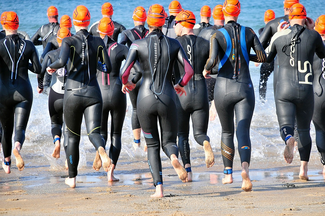Posted by CJ Bearce on 24th Feb 2017
Wetsuit Selection and Care
1. Size, size, size!
Sizing a wetsuit can be tough. Each band has their own sizing options and sizing suggestions, some brands run very small; others are true to their size. Forget what size shirt you wear, the wetsuit size you need will probably be different. When looking at the sizing information the most important factor is going to be weight, so make sure that you are comfortably in the manufacturer weight range. If you are pushing the upper limit of the weight suggestion, you might want to size up to the next size. Wetsuits are designed to be snug, so it will fit close to the body, but shouldn’t severely reduce your range of motion or feel like you are being choked.
2. Select the Right Wetsuit for You
There are quite a few options when it comes to wetsuit designs, so find what is going to work best for you. Sleeveless or “Farmer John” suits are ideal for warmer waters or for people looking for an unrestricted range of motion in the upper body. Full sleeved wetsuits will provide the most warmth and the largest reduction in drag, as it provides the most coverage. The smaller wrist holes will also allow less water to pass through the suit compared with the sleeveless. There are also “separates” which allow you purchase separate top and bottom pieces. The benefit of separate pieces is that you are able to customize the sizes you need more specifically. Say you have skinny legs, but bigger belly you would be able to choose different sizes for top and bottom to ensure a good fit. Even different models in the same brand feel differently. Usually the higher end the suit, the more attention to detail is put into how the suit feels and works with the body.
3. Protection
Getting a wetsuit on for the first time can be a struggle but gets easier with time and practice, but the last thing you want to do is rip your wetsuit before it hits the water. Before trying on your wetsuit make sure that your fingernails are trimmed and do not have sharp points. Remove all jewelry, neoprene does not hold up well against a diamond ring! Many companies will send gloves and booties with the wetsuit to help protect from rips the suit as you put it on. If not, cotton gloves for hands and sock or plastic bags for your feet will do just fine.
4. Getting it on!
Getting a wetsuit on can be a challenge, but gets easier with practice. It is important to remember that the neoprene that covers the outside of the wetsuit is fairly fragile as susceptible to tearing, so avoid using fingernail to pull on the outside of the wetsuit. Start by putting one leg through, and gently pulling it up (by pinching the fabric between two fingers or by pulling on the inside liner) nearly into place, then do the same with the other leg. Adjust the suit so that it fits like a pair of high-waisted pants, smoothing all wrinkles. Slide one arm through the sleeve adjusting as you go, than the other. Now check to make sure the zipper is clear of obstruction and gently pull the zipper lanyard straight up and into place. Now that the suit is on, check for wrinkles, excess material, and your range of motion.
5. Post-use Care
Once your wetsuit has had its maiden swim, it needs a little more attention before you put it away. Salt water and chlorinated water quickly degrade fabrics, so wetsuits need to be washed and rinsed before storage. Wetsuits should be soaked in clean fresh water, and then rinsed out with fresh running water. To dry hang on a wide hanger and let it air dry completely. Ideally for storage a wetsuit should be hung on a wide hanger so the weight of the suit is distributed to a larger area of the suit or sandwiched between two sheets and gently rolled up taking care that no neoprene is touching. Do not put the wetsuit in the washer, dryer, or hang in direct sunlight.

